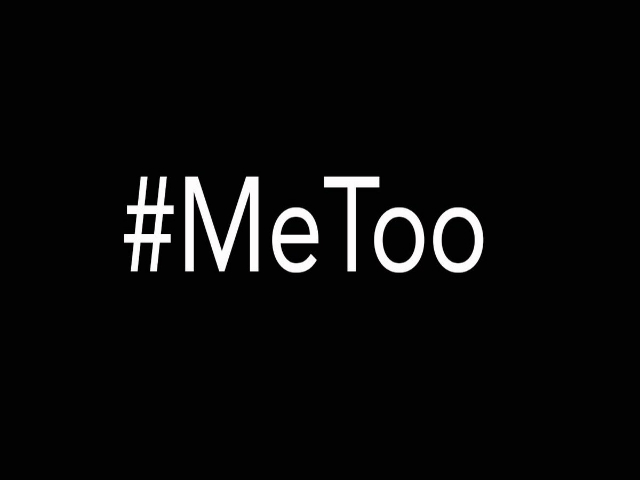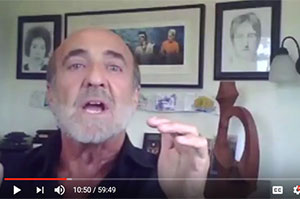THE BREAKFAST OF EMOTIONALLY HEALTHY CHAMPIONS!
BY DAVID M. CORBIN
Have you ever wondered why we hear so much about physical diets and so little about mental diets? About what we should take into our bodies and what we shouldn’t? What we should allow into our minds and what we should avoid putting near us?
Eat well and you could be fit for life. Great! Do that and, at the same time, put negative emotions into your emotional gut and you’ll be fit alright – fit to be tied? Clearly, our goal is to balance; to be both physically and emotionally fit.
The model for emotional health involves the simple but not-so-easy practice of forgiveness. Clearly, forgiveness is not the only path to emotional health, yet it is one of the major impediments. We forgive to lighten our load and make space for positive energy to flow through us. Furthermore, we forgive to cleanse ourselves of negative feelings, and thus avoid attracting other negativity in our lives.
How is physical fitness measured? Doctors measure physical health by first elevating the physical stress levels (with treadmills and stairs) and then checking to see how long it takes for the body to recover. The duration of time it takes for the body to regain a healthy pulse, level of blood pressure, etc., is what the medical community call the recovery rate.
One can apply a similar model of fitness and recovery rate to our emotional health. For this test, we don’t really have to create a stressful situation, such as putting the person on an emotional treadmill to get their emotional health stress level up. Everyday life seems to arrange that stress test for us on a regular basis because there’s no shortage of stressor in today’s world. Our emotional recovery rate can be measured by the time it takes us to reach a peaceful level of forgiveness of self and others.
 Just as a fast recovery rate in the physical health test is a sign of good physical health, a sure sign of good emotional health is a fast emotional recovery rate. The faster our emotional recovery rate, the healthier and happier we seem to be. Make sense? Of course it does.
Just as a fast recovery rate in the physical health test is a sign of good physical health, a sure sign of good emotional health is a fast emotional recovery rate. The faster our emotional recovery rate, the healthier and happier we seem to be. Make sense? Of course it does.
Forgive. Lighten your load. Walk, run, stroll, or amble toward your goals without the added angst associated with carrying that grudge, not letting go, hanging on to the bad feelings, and simply not forgiving.
Nobel Peace Prize winner, Desmond Tutu, has lived a life that has been filled with strife, challenges, and more than his share of situations requiring forgiveness. In his wonderful book, No Future Without Forgiveness (1999), Tutu offers this clear and succinct description of forgiveness:
“Forgiving and being reconciled are not about pretending that things are other than they are. It is not patting one another on the back and turning a blind eye to the wrong. True reconciliation exposes the awfulness, the abuse, the pain, the degradation, and the truth. It could even sometimes make things worse. In forgiving, people are not asked to forget. On the contrary, it is important to remember, so that we should not let such atrocities happen again. Forgiveness does not mean condoning what has been done. It means taking what happened seriously and not minimizing it; drawing out the rising in the memory that threatens to poison our entire existence. It involves trying to understand the perpetrators and so have empathy, to try to stand in the shoes and appreciate the sort of pressures and influences that might have conditioned them. Forgiving means abandoning your right to pay back the perpetrator in his own coin, but it is a loss that liberates the victim. We will always need a process of forgiveness and reconciliation to deal with those unfortunate yet all too human branches in relationships They are an inescapable characteristic of the human condition.”
THIS VIDEO IS EXACTLY WHAT I AM TALKING ABOUT:
With this in mind, how can you improve your human condition, your emotional health? Here are two easy-to-use strategies.
The Inverse Paranoid Method
What? You read correctly – inverse paranoid. See, a paranoid believes that the world is conspiring against them, right? Well, the inverse paranoid believes that the world is conspiring to help them. So, in this method you believe (or fake yourself into believing) that the universe has given you an amazing gift associated with the situation in which you felt wronged. Think as though the entire situation came into your life as a lesson offered to instruct rather than obstruct you toward your path to happiness, peace, and abundance.
Here are the two steps:
- Ask yourself, “What gift is hiding or masquerading as negativity?” Then, write down at least five things that come to mind. Even if it seems like the answers are just plain nuts, write them down.
- Next, say to yourself, “This is great! This is a true gift. I am so grateful for the lessons that I’m about to receive.” Write down at least five potential lessons that are being gifted to you by this situation. Allow your unconscious mind to express here even if you don’t fully believe it.
Oh, by the way, you can be sure that in your inaugural attempt at this method (and maybe in the next few attempts), your ego-self will not be too shy to say, “Nothing is good about his, Bozo. This stinks!”
We’ve got a lot of experience holding on to anger and other negative emotions, and we usually have very little experience asking the empowering questions above. So when you encounter the “Bozo” response, simply smile, and say, “Thanks but no thanks,” the ego-self, and get back to asking your empowering question (No. 1) and making your empowering statement (No. 2).
Like all muscles, it takes practice, practice, and more practice to build up your inverse paranoid muscle. And it’s well worth the effort. Why? Because when you discipline yourself to appreciate life’s hidden gifts—even those that are imbedded in challenges—you’ll lost fifty pounds of negative emotional fat in a single day and step lighter in forgiveness and peace.
 The Don’t Blow It Off, Blow It Away Method
The Don’t Blow It Off, Blow It Away Method
Face it. If you just blow it off, that is to say, let it slide or fuggeddaboudit and not proactively work to forgive, you will be prone to holding onto and carrying negative emotions. It’s tough to maintain a positive attitude when weighed down with that baggage. This method helps to let go of those negative emotions and also create closure so that you will reduce or eliminate the chances of those negative emotions coming back to haunt you. Scientist and skeptics as well as right-brained artists have utilized it.
INGREDIENTS NEEDED:
- At least 100 pounds of imagination
- Up to fifty transparent imaginary balloons
- The belief of a child—what is referred to as the beginner’s mind
- Sit with your feet on the ground, your arms relaxed and resting effortlessly on your legs or knees; take two deep cleansing breaths. Close your eyes and keep breathing. (It’s not a good thing to stop breathing for any length of time!)
- Using your deepest imagination, go into that situation which initiated the negative emotion, feel the negative emotion; feel your body’s reaction to it. Ask yourself what color the negative emotion is represented by. For example, if the negative emotion is anger, what color is the anger (Uh oh, here comes that ego again. It’s saying that it doesn’t have any color. No problem, just ask yourself, if it did have a color, what color would it be?) Let’s say, again for example, you declare it to be red.
- Take out one of your imaginary balloons and blow that red negative emotion into the balloon. Keep blowing it up until you’ve blown out all of the color, which is to say all of the negative emotion/ then tie off the big red balloon and watch it float (in your mind) easily and effortlessly up toward the Sun, higher and higher, taking that red-colored negative emotion with it until it’s out of sight … gone!
- Go inside and see if you can conjure up any more of that negative emotion, looking around for any red color. If you find any, repeat step No. 3 until you can no longer see or feel the negative emotion associated with that situation.
The Blow It Away Method is clearly unconventional. And yet, if it works (and many people have used this method effectively for years), you will want to master it. But in the spirit of true honesty, you should know that these methods don’t really work … unless you really work them! When you really work them, they will lighten your load, and you will give yourself one of the most wonderful gifts in life—the gift of forgiveness, forgiveness of self and forgiveness of others.
 So now your breakfast table is set, and you can choose one or both of these breakfasts of emotionally healthy champions. It’s important to remember this: many of us have a rather long history of holding onto feelings and not letting go. However, just like all habits, it may take some time to integrate them into your life skills repertoire. When you’ve mastered these techniques and are able to do them conscious, unconsciously, and naturally, you really will move through life much less encumbered.
So now your breakfast table is set, and you can choose one or both of these breakfasts of emotionally healthy champions. It’s important to remember this: many of us have a rather long history of holding onto feelings and not letting go. However, just like all habits, it may take some time to integrate them into your life skills repertoire. When you’ve mastered these techniques and are able to do them conscious, unconsciously, and naturally, you really will move through life much less encumbered.
And remember this: we forgive because at some point in our lives we will need to be forgiven. Use these strategies to let go, forgive, and really live that big life you so deserve!







